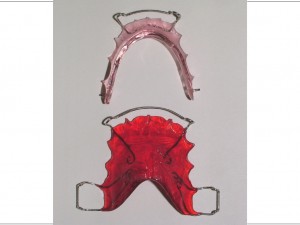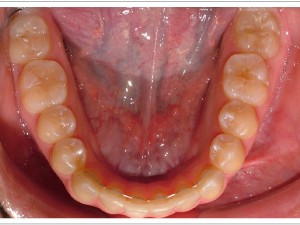After braces, do I need to wear a retainer?
Do I need to wear a retainer after orthodontic treatment?
The issue of orthodontic retention has plagued orthodontists, dentists and patients for as long as there have been patients in orthodontic treatment. The most current science on the topic of retention is best summarized in research published by Little et al from the University of Washington. Little states that no matter what kind of orthodontic treatment the patient had: extractions or non-extraction, expansion, retraction, crowding, spacing, surgery, headgear or functional appliances, all patients undergo orthodontic relapse. Simply put, this means that every patient will need orthodontic retention to keep his or her teeth in the same condition they are in the day their treatment is completed.
What is the duration of retention? For how long do I have to wear this retainer? The average adult undergoes almost 3mm of lower anterior crowding between the ages of 26 and 43. We have all seen adults with lower anterior crowding. The skeletal structure of the face continues to remodel (change) as we age, and teeth continue to undergo changes through wear and eruption; therefore, we suggest lifetime retention.
What we try to do at Bruner Orthodontics is meld science with anecdotal evidence from our office and validate that by answering the question, “What I would do if this was my family member?”
The Bruner Orthodontic retention policy is that all patients that have undergone orthodontic treatment receive a set of retainers. After our patients get their braces off, we ask them to return to our office for 5 scheduled retainer checks during their 2 years of supervised retention. They are instructed to wear their retainers full time for six months, except when eating. After six months of full time wear, most often those retainer patients change to night time only retainer wear for the rest of their life. By disrupting the equilibrium of forces that are pushing from the inside (tongue and teeth) and those that are pushing from the outside (muscles and soft tissue of the face), night time retainer wear can keep the teeth and bite in this ideal relationship.
This has been a successful retention strategy for us to help our patients from needing a second round of orthodontic treatment as adults.
What times of retainers do we use?
There are three main types: The Hawley retainer, the Essix retainer, and the Fixed retainer.
The traditional orthodontic retainer is the Hawley retainer.

An upper and lower Hawley retainer
Advantages: This acrylic retainer covers the palatal and lingual surfaces and its rigidity won’t allow the arch form to collapse. No occlusal coverage allows the teeth to erupt vertically or settle over time into a tighter occlusal relationship.
Disadvantages: Esthetics – the metal bar running across the front of the patients teeth is often not a welcomed attribute. Palatal coverage can challenge some patients phonetically. No occlusal coverage means there is no protection from night time grinding and occlusal wear.
The Essix retainer is the one we use most often. It is a vacuum or pressure formed medical grade plastic that is .040” thick (or about 1mm thick).

An upper and lower essix retainer
Advantages: It is esthetically pleasing and looks like an Invisalign aligner. They hold rotations very well. The occlusal coverage protects the patient’s teeth at night from bruxism.
Disadvantages: They are not rigid in the transverse dimension and posterior crossbites can relapse. The full occlusal coverage slows down the vertical settling that normally occurs post-orthodontic treatment. There is occlusal separation that some patients can’t tolerate at night. They wear out faster than Hawley retainers (usually in 2 to 5 years).
The Bonded or Fixed retainer is rarely recommended and if used it is typically placed from the lower canine to canine.

A lower bonded retainer at Bruner Orthodontics
Advantages: It eliminates the need for compliance with retainer wear
Disadvatages: Requires compliance with the avoidance of food like carrots and apples in order to not break the bonds to the teeth. The ability to maintain excellent oral hygiene is compromised. There is always the risk of breakage. When broken the lower anterior teeth can move before the retainer can be fixed.
We predominantly use upper and lower Essix retainers unless we need the rigidity of a Hawley after expansion, correction of a crossbite, or occlusal settling. A bonded retainer may be used for a patient with periodontal compromise (splinting) or for a patient with severe compliance issues (medical or behavioral).
If you have any retention or retainer questions please call our office at 425-883-3353, or visit us on the web at http://www.brunerortho.com We desire to provide your patients the absolute best orthodontic care that is available today.


 Bruner Orthodontics 2016 |
Bruner Orthodontics 2016 |